Ever wondered why you feel bloated after eating normal wheat products?
You’re not alone.
Many people experience discomfort but don’t know the reason.
Enter Khapli wheat, a game-changer in the world of grains.
This blog dives into the differences between Khapli wheat and normal wheat, revealing how making a simple switch can dramatically improve your digestive health and overall well-being.
Say goodbye to bloating and hello to a healthier you with our guide on Khapli Wheat vs Normal Wheat: Breaking the Myth.
The Essence of Wheat in Our Diet
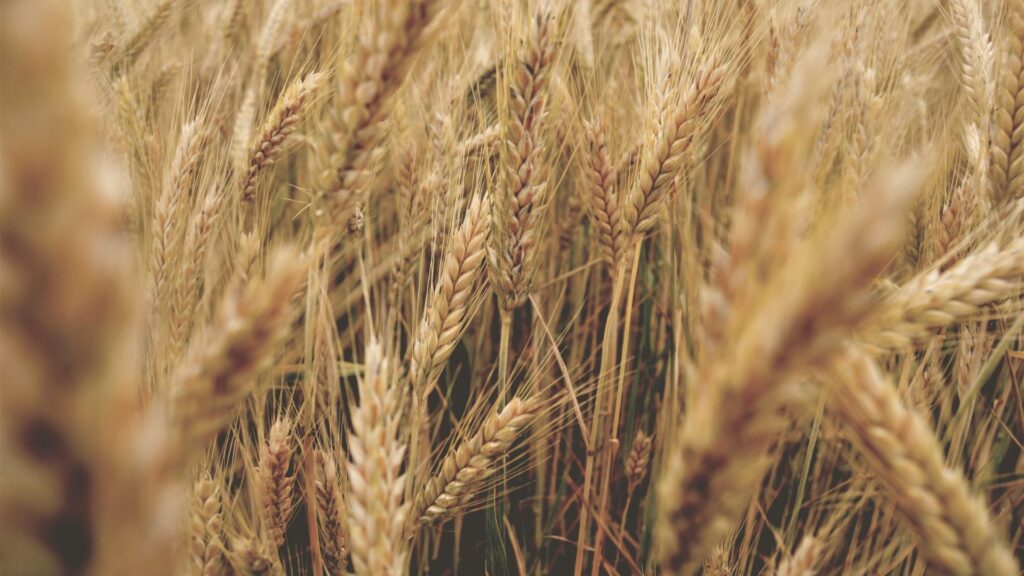
Wheat isn’t just a staple food; it’s a major part of our cultural identity and diet, making up a significant portion of meals worldwide. Wheat is everywhere, from the soft, warm bread used for your morning toast to the crust of your favorite pizza.
Historical Journey of Wheat
- The Birth of Wheat: Originally, wheat was just a wild grass until our ancestors began cultivating it around 10,000 years ago. Historical research (Smithsonian Magazine) indicates that this domestication likely took place in the Fertile Crescent, a region stretching from the Mediterranean Sea to the Persian Gulf. This was a game-changer for human civilization, leading to the development of farming communities and, eventually, cities.
- From Einkorn to Emirates: The wheat we know today has come a long way. The earliest wheat, known as Einkorn, has evolved into a wide variety of wheat species grown globally, including Durum for pasta and Hard Red for bread (Wheat World). Each variety has its unique properties, making them suitable for different food products.
Wheat Today: More Than Just a Grain
- Cultural Significance: Across the globe, wheat holds deep cultural significance. In the United States, for instance, nothing says “Fourth of July” like a classic hot dog in a soft bun. Meanwhile, in Italy, pasta made from Durum wheat is a staple.
- Nutritional Profile: Despite its ubiquitous presence in diets, wheat’s nutritional value is a hot topic. High in carbohydrates, it’s an excellent energy source. Yet, for some, like those with celiac disease or gluten sensitivity, wheat can pose health challenges. The health community (Mayo Clinic) suggests that while whole wheat is rich in fiber and minerals, processed white flour loses much of its nutritional content.
- The Debate Rages On: The internet is awash with discussions on wheat’s merits and demerits. From gluten-free diets trending on Twitter to heated debates on Quora about the best wheat alternatives, everyone has an opinion. Searching for “benefits of whole wheat” yields millions of results on Google, indicating widespread interest and confusion.
Wheat’s journey from an ancient grain to a modern-day dietary staple is a testament to its integral role in human diets and cultures.
Yet, as we advance, the debate around its nutritional value and suitability for different individuals continues, fueled by changing dietary trends and increased health awareness.
Whether it’s through a gluten-free lifestyle or incorporating ancient grains like Khapli, the conversation around wheat is as dynamic as its history.
Unveiling Khapli Wheat: The Ancient Super Grain
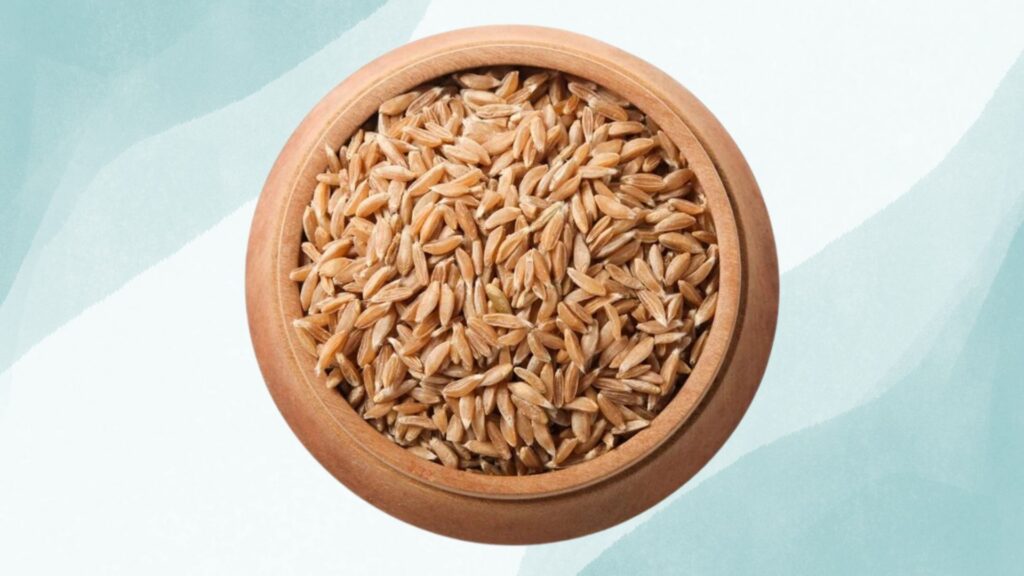
What Exactly Is Khapli Wheat?
- Definition: Khapli wheat, also known as Emmer wheat, is an ancient grain that’s making a major comeback in the health community. Unlike the modern wheat varieties that dominate our shelves and plates, Khapli wheat is recognized for its long, slender grains and a rich, nutty flavor that adds a unique twist to traditional recipes.
- Historical Significance: Considered one of the first domesticated crops by humans, its cultivation can be traced back thousands of years. Its resilience to drastic weather and soil conditions made it a staple in ancient civilizations.
Nutritional Comparison:
- Lower Gluten Content: What sets Khapli apart is its naturally lower gluten content, making it easier to digest for those with mild gluten sensitivities. This doesn’t mean it’s gluten-free, but it’s often tolerated better than its contemporary counterparts.
- Rich in Nutrients: Loaded with dietary fibers, proteins, and vitamins, Khapli wheat supports better digestion, a healthier heart, and balanced blood sugar levels. This is a stark contrast to the refined flours that strip away nutritional value in favor of shelf life and texture.
The Revival of Khapli Wheat
- Health-Conscious Trends: With more people joining the clean and whole food movements, ancient grains like Khapli wheat are seeing a resurgence. Terms like “whole grain” and “ancient grain” have become buzzwords, appearing frequently on health blogs and social media. Sites like Whole Foods Market and EatRight often feature recipes and articles on incorporating these grains into diets.
- Scientific Support: There’s an increasing body of research highlighting Khapli wheat’s health benefits. Studies have shown that individuals incorporating it into their diet experienced significant improvements in digestion, inflammation reduction, and even weight management. This evidence backs up Khapli Wheat’s anecdotal praise in wellness circles.
Modern Wheat: A Nutritional Nemesis or a Misunderstood Staple?
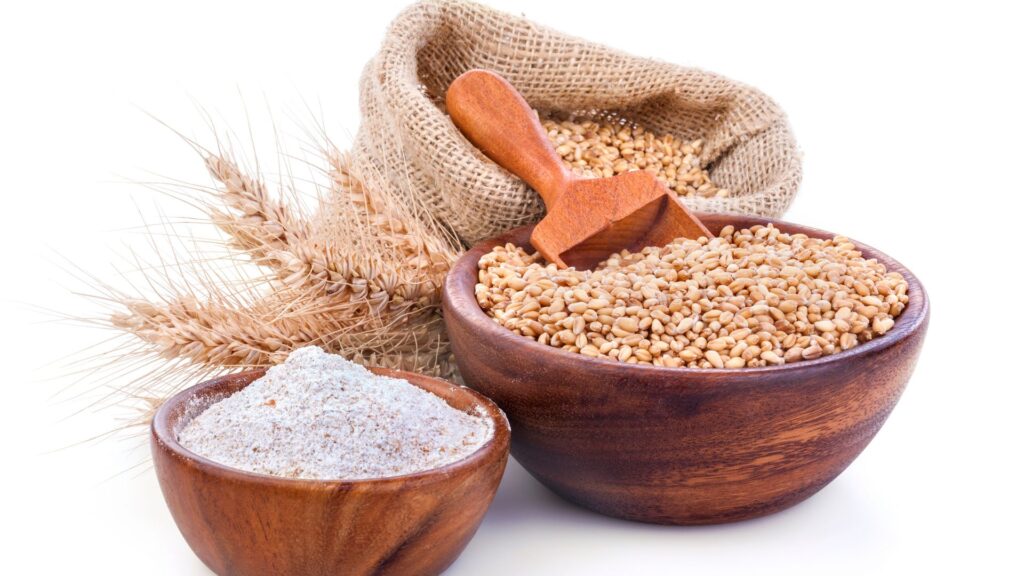
Modern Wheat: A Nutritional Nemesis or a Misunderstood Staple?
The Genetic Makeover of Modern Wheat
Modern wheat has undergone significant changes over the years, primarily due to selective breeding focused on improving yield and disease resistance. This genetic makeover has sparked a lively debate about its impact on nutritional content and overall health implications.
- Yield and Resistance: Scientists have worked tirelessly to produce wheat strains that can survive harsh conditions and produce more grain. This effort has paid off, resulting in robust crops that feed more people than ever before. However, some argue this has altered the wheat’s nutritional profile.
- Nutritional Content: Critics claim that modern breeding practices have compromised wheat’s nutritional value. Yet, research on the subject reveals a more nuanced picture. According to experts like those at Harvard’s T.H. Chan School of Public Health, modern wheat retains essential nutrients, albeit with some variations from its ancient counterparts.
Debunking the Myths Around Modern Wheat
Myths and misconceptions about modern wheat abound, especially regarding gluten content, glycemic index, and nutrient loss. It’s essential to separate fact from fiction:
- Gluten Content: A common belief is that modern wheat contains more gluten than ancient varieties, contributing to increased gluten sensitivity. However, studies such as those referenced by Celiac Disease Foundation suggest that gluten levels haven’t significantly changed over time. The real issue may lie in our increased consumption patterns.
- Glycemic Index: Some argue modern wheat’s higher glycemic index (GI) contributes to diabetes and obesity. Yet, as Mayo Clinic explains, the GI of wheat products depends more on processing than the wheat itself. Whether ancient or modern, whole wheat generally has a lower GI than refined products.
- Nutrient Loss: The belief that modern wheat is nutritionally inferior overlooks how processing, rather than wheat variety, affects nutritional content. Whole grains, regardless of their era, are healthier than refined grains.
While modern wheat has undergone changes, it remains a staple food for a significant portion of the global population.
Advances in breeding have focused on yield and disease resistance, not diminishing its nutritional value.
Understanding the facts and exploring reputable sources allows us to appreciate modern wheat’s role in our diet without succumbing to unfounded myths.
Head-to-Head: Khapli vs Normal Wheat
When you stroll through the bread aisle of your local grocery store, you’re bombarded with choices that seem to scream “healthy!” or “natural!” at you.
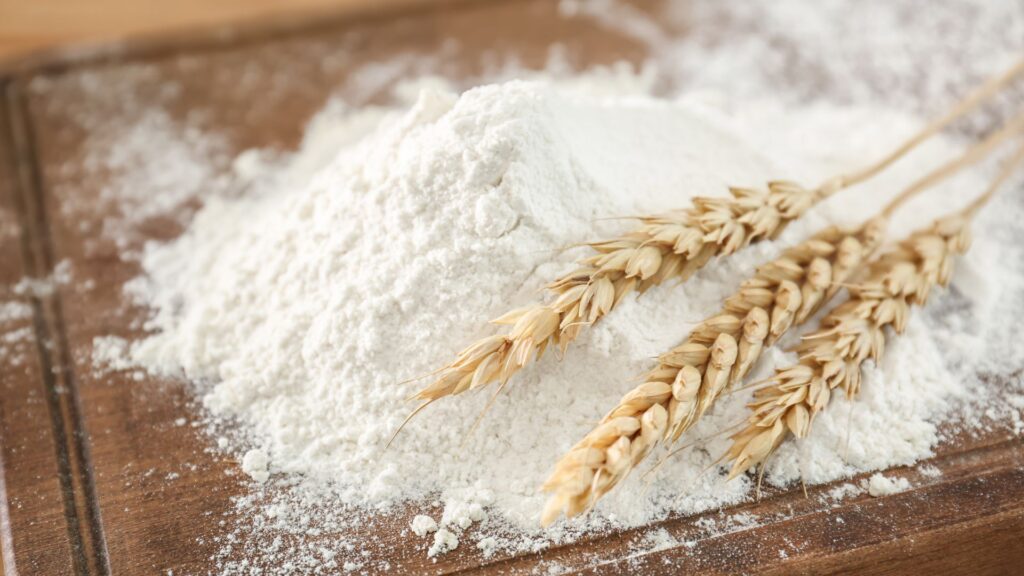
But what’s the real scoop when you pit ancient grains like Khapli wheat against the ubiquitous “normal” or modern wheat? Well, grab a seat, and let’s break it down in plain English with a sprinkle of humor because, let’s face it, wheat comparison might not be your typical blockbuster.
Nutritional Face-off
Macronutrients (Carbs, Proteins, Fats):
Khapli Wheat: This ancient grain is like the underdog in a sports movie; it packs a powerful punch with fewer carbs and more protein. It’s kind of like choosing between a heavyweight boxer and a nimble kickboxer; both bring something unique to the ring.
Normal Wheat: Your standard go-to guy. It has more carbs, but don’t write it off just yet. Carbs are not the enemy (despite what that trendy diet says). Our bodies need them for energy – just think of it as fuel for your Netflix binges.
Key Takeaway: Khapli might be your new best friend if you’re tracking macros. More protein, fewer carbs – it’s a gym junkie’s dream.
Micronutrient Showdown (Vitamins, Minerals, Fiber):
Khapli Wheat: It’s a micronutrient powerhouse, high in vitamins and minerals, and rocking a fiber content that could put a bran muffin to shame.
Normal Wheat: Still a solid contender. It’s like comparing Batman to Superman; both have their strengths and weaknesses but are heroes in their own right.
Key Takeaway: For a fiber fiesta and a micronutrient party, Khapli wheat brings the goods. Check out the nutrient comparison on NutritionData to see the breakdown.
Health Impact Analysis
Blood Sugar Levels, Gluten Sensitivity, and Chronic Diseases:
Khapli wheat is the gentle giant here, with studies suggesting it has a lower impact on blood sugar levels – ideal for those keeping an eye on their glucose. Ever tried switching your regular pasta with a Khapli variety? Your blood sugar will thank you.
On the gluten front, both have gluten, but anecdotally, some folks find ancient grains like Khapli a bit easier on the tummy.
Key Takeaway: No clear winner, but if you’re gluten-sensitive or watching your sugar intake, Khapli might be worth a shot. Always good to check in with a doctor, though. Mayo Clinic’s gluten sensitivity guide sheds light on this topic.
Environmental Considerations
Sustainability of Farming Practices:
Khapli wheat is like that indie band that’s cool because it’s not mainstream – it requires less water and is often grown using more sustainable practices.
Normal wheat is more like that big stadium rock band; it’s everywhere, feeding millions, but its production can be harder on the planet.
Key Takeaway: If eco-friendliness were a wheat competition, Khapli would take home the gold.
Culinary World: Taste, Texture, and Usability
Flavor Profiles and Suitability for Various Cuisines:
Khapli wheat has a nuttier, richer taste and lends itself well to rustic dishes. Think of it like adding a little indie folk music to your cooking playlist – it might just surprise you.
Normal Wheat is the versatile pop song of the culinary world; it’s what most of us grew up on and works in just about any recipe.
Key Takeaway: Both grains have their place in the kitchen. Experimenting is key. Want to start baking with ancient grains? King Arthur Baking offers top-notch advice and recipes.
In the grand scheme of things, choosing between Khapli and normal wheat comes down to personal preference, dietary needs, and environmental values.
Each has its own set of perks and quirks, much like choosing between an acoustic and an electric guitar for your next jam session.
The best way to find out?
Experiment in your own kitchen and taste the difference yourself.
Incorporating Khapli Wheat into Your Lifestyle
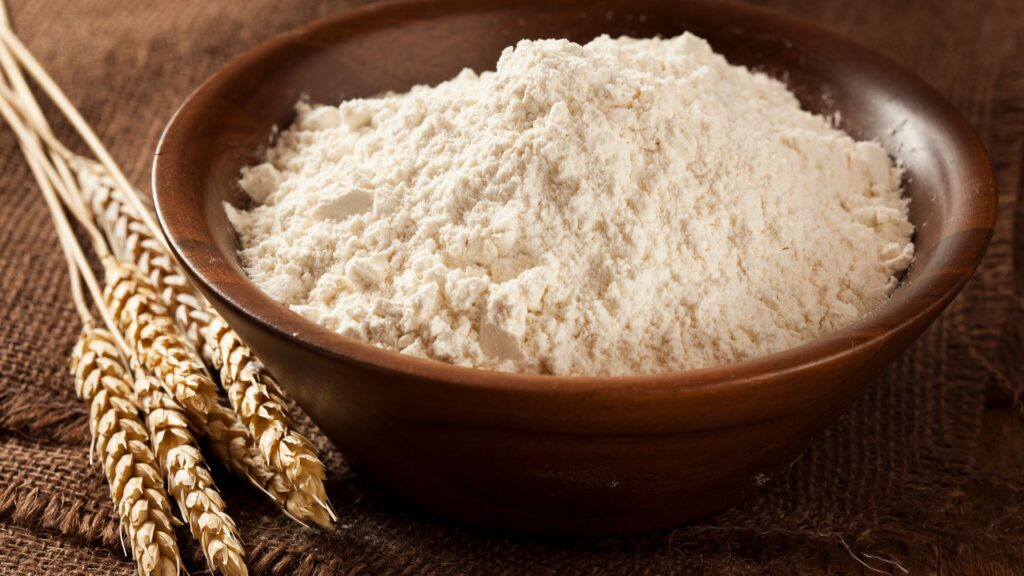
Making the switch to Khapli wheat can be a game-changer for your health and the planet, all while adding a fresh twist to your meals. Here’s how to ease it into your life and kitchen:
Making the Switch: Practical Tips
- Start Small: Begin by mixing Khapli wheat flour with regular wheat flour in your recipes. If you’re making bread or cookies, substitute half the amount of regular wheat with Khapli wheat. This whole wheat bread recipe is a great place to start.
- Choose Whole: Opt for whole Khapli wheat berries for a nutritious addition to soups and salads. They add a delightful chewy texture and are packed with nutrients.
Recommendations for maintaining a balanced diet.
- Diversity Is Key: Incorporate a variety of grains into your diet. Alongside Khapli wheat, try quinoa, barley, and brown rice to ensure you’re getting a broad spectrum of nutrients.
- Vegetables and Fruits: Aim to fill half your plate with vegetables and fruits at every meal. This ensures you’re getting plenty of fiber, vitamins, and minerals.
From Field to Plate: Recipe Inspirations
- Innovative Khapli Wheat Pancakes: Give your morning a boost with Khapli wheat pancakes, mixing in blueberries or bananas for added sweetness and nutrients.
- Exotic Khapli Wheat Salad: Toss-cooked Khapli wheat berries with chopped cucumbers, tomatoes, parsley, lemon juice, and olive oil for a refreshing and nutritious salad.
Cooking tips to preserve nutritional integrity
- Low and Slow: When cooking Khapli wheat, especially the whole berries, use a low, slow cooking method to preserve their nutrients. Simmering instead of boiling can be better.
Voices from the Field: Testimonials and Expert Opinions
Success Stories: Transformations and Health Improvements
- Jane’s Journey: Jane, a 35-year-old teacher from California, switched to Khapli wheat and noticed significant improvements in her energy levels and digestion. “It’s been a revelation for my health,” she says. Stories like Jane’s are becoming more common as people discover the benefits of ancient grains.
Expert Insights
- Nutritionist Perspective: Dr. Sarah Allen, a renowned nutritionist, emphasizes the benefits of incorporating Khapli wheat into one’s diet. “Its high protein and fiber content make it a superior choice for those looking to manage weight or blood sugar levels,” she explains.
- Guidance for Health Conditions: For individuals with specific dietary needs, such as diabetes or heart disease, incorporating Khapli wheat can be a beneficial move. However, always consult with a healthcare provider or dietitian to tailor dietary choices to your health condition.
Incorporating Khapli wheat into your diet doesn’t just mean eating healthier; it’s a step towards a more sustainable lifestyle and supporting agricultural practices that have a lesser impact on our planet.
Looking Ahead: The Future of Wheat Consumption

The wave of ancient grains hitting our modern plates is no mere trend; it’s a movement back to our roots, pushing for a healthier future. Khapli wheat, along with its ancient grain siblings, is leading the charge, and here’s why:
- Health Kick: According to a Harvard study, whole grains like Khapli are packed with nutrients that promote heart health, improve digestion, and might even keep those pesky pounds at bay. No wonder there’s a growing buzz around bringing these nutritional powerhouses back onto our tables.
- Taste Test: Beyond health, there’s taste. Ancient grains bring a depth of flavor that modern wheat strains can’t match. That subtle nuttiness of Khapli? Perfect for elevating homemade bread or adding a twist to your classic pancake mix. It’s like the difference between store-bought tomatoes and the ones you pluck fresh from your garden – the taste is incomparable.
Predictions for Future Trends in Wheat Consumption:
- The Rise of the Ancient: Expect to see ancient grains like Khapli wheat popping up everywhere—from your favorite bakery’s signature loaves to the menus of trendy cafes.
- Label Love: With consumers becoming more health-conscious, labels touting “made with ancient grains” will become even more appealing, and brands are sure to take notice.
Research and Innovations: The Seed of Change
The world of wheat is not just looking back; it’s also moving forward with cutting-edge research and genetic studies.
- Genetic Goldmine: Scientists are exploring the genetic code of ancient grains to unlock secrets that could lead to more nutritious, resilient wheat varieties. Recent research in plant science is paving the way for wheat that could stand up to climate change and still deliver the health benefits we’re after.
- Custom Crops: Future breakthroughs may include wheat varieties tailored to specific dietary needs, like gluten-free wheat for those with gluten intolerance or wheat packed with extra nutrients to combat malnutrition.
The fusion of ancient wisdom with modern science could set the stage for a wheat revolution, making our future meals healthier, tastier, and more sustainable. Keep an eye on this space; we’re just scratching the surface of what’s possible when we marry the old with the new.
FAQs
1. What Makes Khapli Wheat a “Super Grain” Compared to Normal Wheat?
Khapli wheat, also known as Emmer wheat, has been hailed as a “super grain” due to its rich nutritional profile. It boasts a lower glycemic index, making it a better choice for blood sugar management. Additionally, Khapli is higher in dietary fibers, antioxidants, and micronutrients like magnesium and iron compared to normal wheat. This ancient grain supports better digestion and contributes to a feeling of fullness, aiding in weight management.
2. Can Switching to Khapli Wheat Improve Gluten Sensitivity Issues?
Yes, switching to Khapli wheat can potentially benefit those with gluten sensitivity (note: not celiac disease, as Khapli still contains gluten). Khapli wheat has a different type of gluten, which is often considered to be more “digestible” and may cause fewer sensitivity issues. Many people report a noticeable improvement in their digestive comfort and overall health after making the switch.
3. Is Khapli Wheat Environmentally Friendlier Than Normal Wheat?
Khapli wheat scores high on the sustainability scale due to its hardy nature. It requires less water and can thrive in poor soil conditions without the need for chemical fertilizers or pesticides. This ancient grain is a champion of sustainable agriculture, promoting biodiversity and reducing the environmental impact of farming.
4. How Does the Taste and Texture of Khapli Wheat Compare to That of Normal Wheat?
Khapli wheat offers a distinctly nutty flavor and a richer, earthier taste than normal wheat’s more neutral taste. Its denser texture makes it ideal for hearty bread, pasta, and other baked goods. Those who prefer a more robust flavor profile in their dishes might find Khapli wheat to be a delightful culinary discovery.
5. Why Isn’t Khapli Wheat as Popular or Widely Used as Normal Wheat?
Khapli wheat’s lesser popularity stems from several factors, including lower yield rates and limited commercial cultivation, which historically made it less economically viable for large-scale farming. However, with growing interest in healthy and sustainable eating practices, Khapli wheat is experiencing a resurgence. Its demand is steadily increasing as more people seek out nutritious alternatives to conventional wheat products.
These FAQs highlight the growing curiosity and enthusiasm surrounding Khapli wheat as a healthier, more sustainable option compared to normal wheat, breaking myths and setting the stage for informed dietary choices.
Unleash Your Inner Wellness Warrior with Weshapesoul

Embarking on a health journey feels like entering a jungle without a map, right?
Fear not!
Weshapesoul is your compass, guide, and cheerleader rolled into one vibrant package. We’re not just another website but your partner in sculpting a healthier, zestier you.
Why Choose Weshapesoul? Let’s Break the Mold Together:
- Precision Nutrition: Forget one-size-fits-all advice. Our treasure trove of nutritional wisdom is as unique as you are. Dive into blogs that do more than inform—they transform.
- Science Meets Soul: Our team isn’t just certified; they’re passionate pioneers in diet and fitness, wielding years of expertise to debunk myths and illuminate truths.
- Custom-Tailored Wellness: From the mysteries of protein powders to the secrets of minerals, we curate content that caters directly to your body’s whispers (sometimes, loud demands).
- Pure Gold Information: Say goodbye to fluff. We’re all about the real deal—no tricks, no gimmicks, just high-quality nutrition intel that shines.
What’s Cooking at Weshapesoul?
- A Library of Enlightenment: Our blog doesn’t just scratch the surface. It delves deep, offering insights that can redefine your relationship with food and fitness.
- One-on-One Power Sessions: Ready for a transformation? Book a consultation with our nutritionists and dietitians, who are wizards in tailoring magic potions (aka diet plans) that work just for you.
Step Into Your Power with Weshapesoul
Choosing us is like unlocking a secret garden of wellness wisdom. It’s not merely about achieving fitness goals; it’s an invitation to dance with life, fueled by knowledge and empowered by choice.
Launch Your Adventure Today
Click over to Weshapesoul and let’s embark on this exhilarating journey together. With a kaleidoscope of articles and personalized expert consultations awaiting, your path to a vibrant, healthier you is illuminated with every click.
Cheers to choosing us, and cheers to choosing YOU. Welcome to Weshapesoul, where every scroll is a step closer to your wellness nirvana.
Explore Now – Journey Through Our ‘About Us‘ Section

Leave a Comment